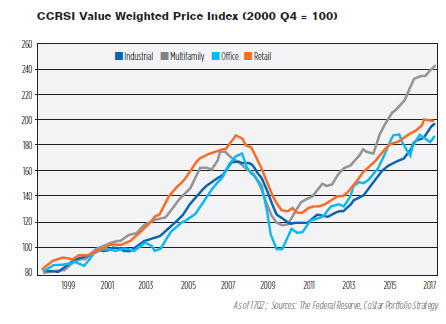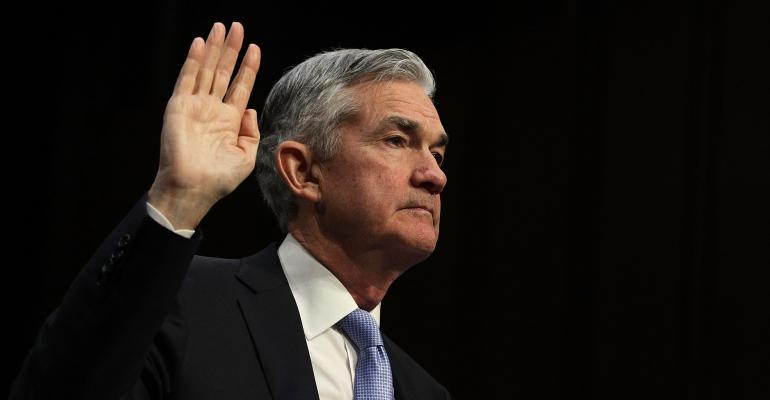Sponsored by CoStar
As 2017 comes to a close, commercial real estate total transaction volume is over $500 billion according to CoStar. Although, that equates to a 14 percent year over year decline, many forget that those levels are still higher than 2006—a banner year. Regardless, numerous industry observers are holding their collective breath. In fact, Janet Yellen began 2017 indicating a potential bubble in commercial real estate driven in part by today’s extended low interest rate environment. In response, lenders, investors and regulators remain anxious with the possibilities of cap rates blowing out in the face of rising interest rates. But are these concerns warranted and will the nomination of Jay Powell actually lead to strong levels of commercial real estate price growth?
Lower for Longer, but CRE Bubble Concerns Continue
Powell will maintain Yellen’s extended low interest rate path with short term rates in the 1.5 percent to 2.0 percent bound range in 2018. Despite three interest rate hikes so far in 2017 and the beginning of the quantitative tightening process, longer term interest rates remain well below 2017 expectations. This trend should continue in 2018, unless the unwinding of the Fed’s balance sheet wreaks havoc on the market. Given this outlook, a blow out in cap rates should be considered a tail risk event.
Powell has expressed concerns with the gradual tightening approach. In fact, he stated in May 2016 speech “A long period of very low interest rates could lead to excessive risk-taking and, over time, to unsustainably high asset prices and credit growth.”
Given this market dynamic, all eyes are on real estate prices. Price growth has been substantial in all property types as outlined in the CoStar Repeat Sales Index (pictured.)

Post-Recession Regulation—A Work In Progress
Although price growth has been strong, leverage in the industry has been below financial crisis peak levels. Increased regulation in response to the Great Recession including Basel III higher capital adequacy and HVCRE restrictions has limited available bank capital and construction lending. Powell, a Republican, has hinted that regulations from the recession are still a work in progress. With banks accounting for more than 50 percent of outstanding commercial real estate debt, any modification in bank regulation could benefit the industry by freeing up capital. Together with Randall Quarles, Fed vice chairman of supervision, we may see an increase in the Systemically Important Financial Institution (SIFI) threshold which could decrease capital requirements for some large lenders, which hold 80 percent of commercial reale estate bank debt.
Bubble Insurance = Data + Selective Opportunities
A sense of continuity and predictability is expected from the new FOMC chair. Concerns around commercial real estate bubbles will only increase with potential regulation refinement and low interest rates. Commercial real estate yields remain attractive and continue to outperform all asset classes including the S&P 500 EPS and corporate debt. At this point in the real estate cycle, it is crucial that both lenders and investors are selective in growing the portfolio. Although bubbles may emerge with capital markets trends, bubbles will form in specific markets and property types. The winners and losers in this cycle will be those that use effective data and analytics to identify these bubbles and manage risk accordingly.
Justin Bakst is director of capital markets for CoStar Risk Analytics, and Xiaojing Li is Director of Quantitative Methods for CoStar Risk Analytics.
Learn more at www.costar.com.

